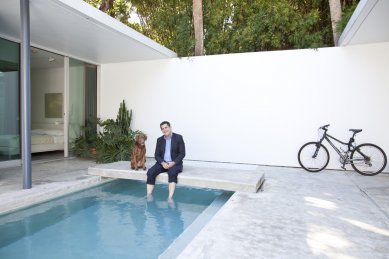
On the death of Terence Riley
On Tuesday, May 18, 2021, American architect and curator Terence Riley passed away at the age of 66 from sudden heart failure. He was involved in the construction of two significant American museums, MoMA and PAMM.
He grew up in Woodstock, Illinois. He became interested in architecture while walking around Chicago, where he was fascinated by the buildings of Frank Lloyd Wright and Ludwig Mies van der Rohe, to whom he later dedicated a monographic exhibition at MoMA. In the 1980s, he studied architecture at the University of Notre Dame in Indiana and at Columbia University in New York City. He gained his first work experience in the New York office of Marcel Breuer. At the height of postmodernism, he co-founded the architectural firm Keenen/Riley with his classmate from Columbia University, John Keenen. His first curatorial experiences were gathered at the architectural gallery of Arthur Ross at Columbia University, where he organized a monographic exhibition for American-French modernist Paul Nelson.
In 1991, Philip Johnson entrusted him with leading the architectural collections of MoMA in New York, where he contributed to the significant expansion of the institution according to the design by Yoshio Taniguchi and simultaneously helped establish the MoMA/P.S.1 program for young architects. He held the prestigious position of Philip Johnson Chief Curator until 2006, when he moved to Florida, where he directed the Pérez Art Museum in Miami, playing a key role in the establishment of a new museum designed by Herzog & de Meuron.
During his 15 years as the chief curator of MoMA, he organized exhibitions featuring renowned figures such as Frank Lloyd Wright and Mies van der Rohe, but also introduced the audience to less-known architects such as Jeanne Gang and Kazuyo Sejima, and brought international architects like Rem Koolhaas and Herzog & de Meuron to the fore. He also focused on the theme of light in architecture, skyscrapers, and the modern Spanish scene. In addition to his own design practice, he also taught at Harvard University and was a frequent guest critic in the architecture studio at the University of Miami.
He grew up in Woodstock, Illinois. He became interested in architecture while walking around Chicago, where he was fascinated by the buildings of Frank Lloyd Wright and Ludwig Mies van der Rohe, to whom he later dedicated a monographic exhibition at MoMA. In the 1980s, he studied architecture at the University of Notre Dame in Indiana and at Columbia University in New York City. He gained his first work experience in the New York office of Marcel Breuer. At the height of postmodernism, he co-founded the architectural firm Keenen/Riley with his classmate from Columbia University, John Keenen. His first curatorial experiences were gathered at the architectural gallery of Arthur Ross at Columbia University, where he organized a monographic exhibition for American-French modernist Paul Nelson.
In 1991, Philip Johnson entrusted him with leading the architectural collections of MoMA in New York, where he contributed to the significant expansion of the institution according to the design by Yoshio Taniguchi and simultaneously helped establish the MoMA/P.S.1 program for young architects. He held the prestigious position of Philip Johnson Chief Curator until 2006, when he moved to Florida, where he directed the Pérez Art Museum in Miami, playing a key role in the establishment of a new museum designed by Herzog & de Meuron.
During his 15 years as the chief curator of MoMA, he organized exhibitions featuring renowned figures such as Frank Lloyd Wright and Mies van der Rohe, but also introduced the audience to less-known architects such as Jeanne Gang and Kazuyo Sejima, and brought international architects like Rem Koolhaas and Herzog & de Meuron to the fore. He also focused on the theme of light in architecture, skyscrapers, and the modern Spanish scene. In addition to his own design practice, he also taught at Harvard University and was a frequent guest critic in the architecture studio at the University of Miami.
The English translation is powered by AI tool. Switch to Czech to view the original text source.

0 comments
add comment











